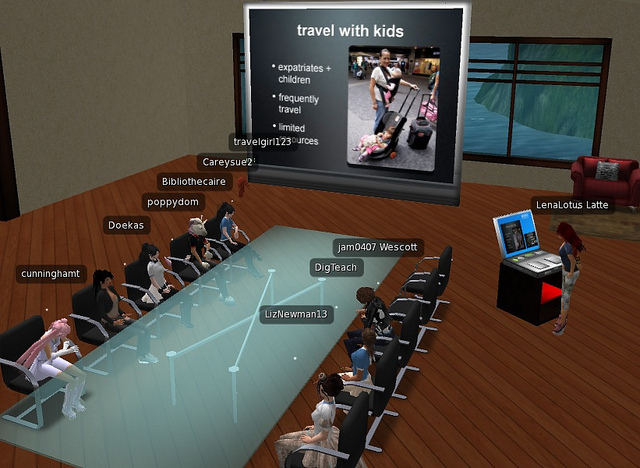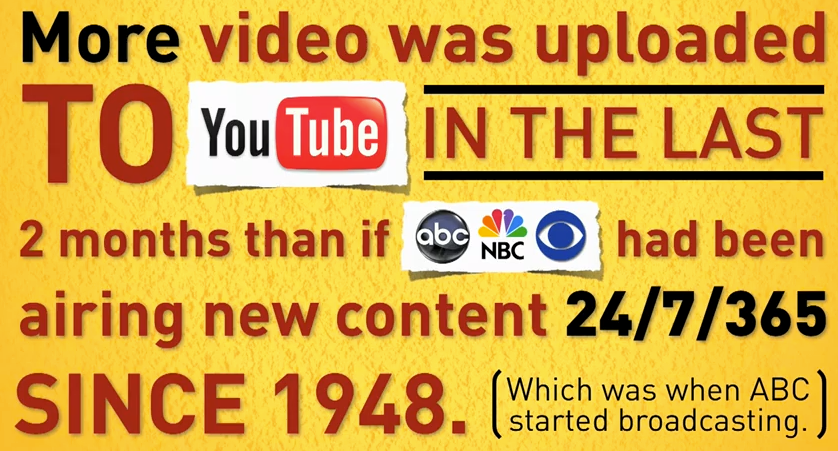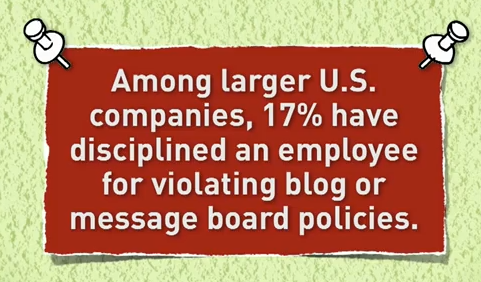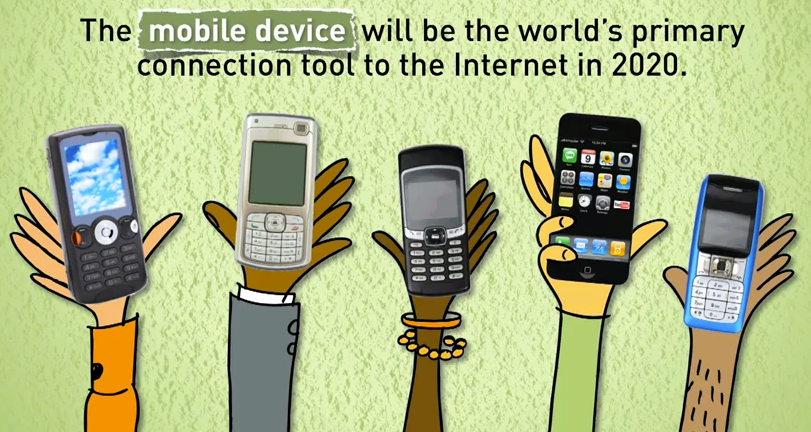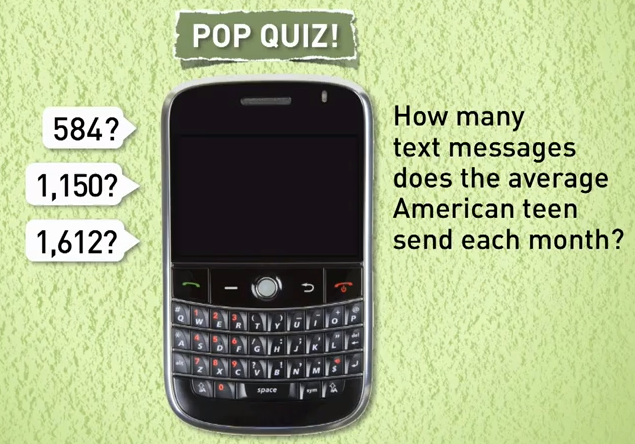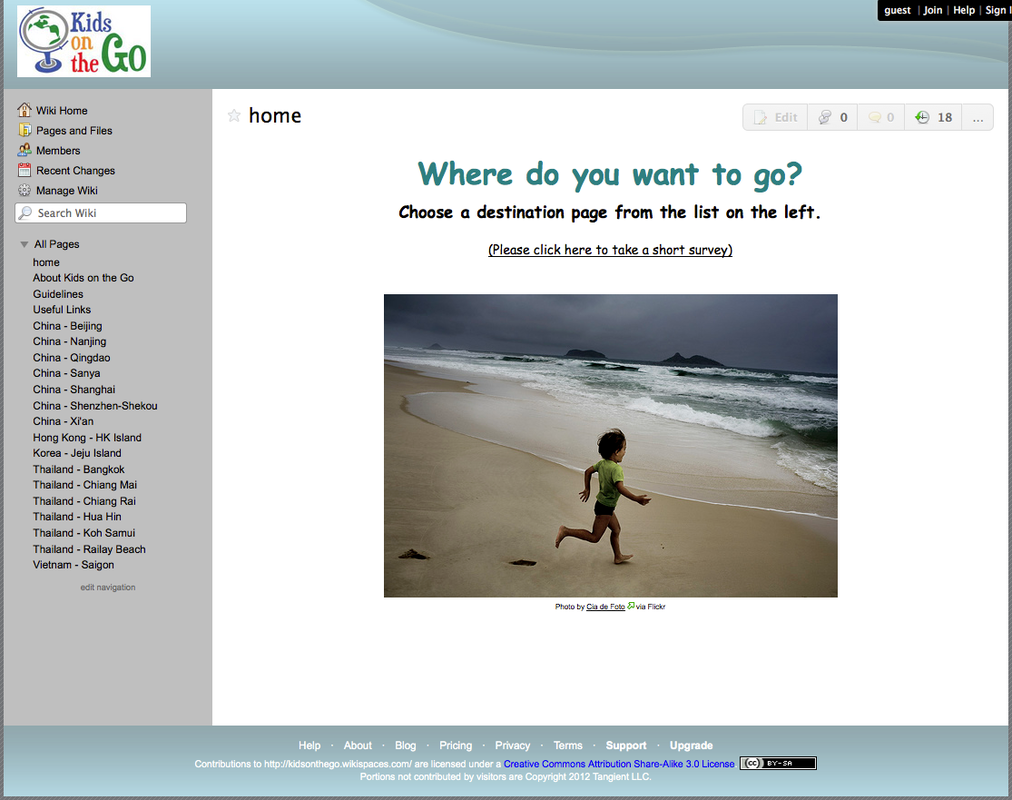I didn't use this blog in my last course because it wasn't required, sadly so. Since then I have completed my librarianship course, received my degree, and have been working part-time as a teacher librarian at my local international school. I wasn't sure I'd write here again, as this blog was created for my Masters coursework. However, as I continue working in my first year as a school librarian, I've had lots of "musings" and have recently thought about resurrecting this space. So here we go--I'll try to be more conscious of writing!
0 Comments
I managed to complete ETL507 (the two-term professional placement, study visit, and portfolio subject) and INF506 (Social networking for information professionals) during this last winter (Australian summer) term. I was in paper hell there at the very end, but I am so glad that it is all over and done.
So what were my thoughts? Just because I'm done with those subjects, doesn't really mean I'm done. It seems studying has only caused me to become more curious. Here are some summarizing thoughts (I'm probably writing this too late). INF506 for me, was pure fun. I got a little carried away at the start diving into social media tools and exploring their uses. It was nice that this was essentially necessary for the class, so I had a good excuse (as I do this kind of thing for fun anyway). When it came time to work on a project, I decided to do something non-education related, and I am so happy I did. I created an online community tool for traveling families. While the site is still its infancy, what this project has done for me was to highlight some of my personal passions. I will continue to maintain this travel wiki (kidsonthego.wikispaces.com), but will treat it as a hobby site. Working on this site has led to other community website projects that I may be helping to develop. Just what I need--more personal projects! I'm not sure why I just can't be one of those people who can watch TV in their free time--I have to go building websites and creating personal projects. Go figure. Anyway, in addition to enhancing my personal passions with social media, I had also encountered a significant amount of fantastic information through rebuilding my personal learning network (PLN). I've gained a better understanding of 21C skills, and have a strong sense of the need to create a culture of sharing and participation. I found that ETL507 was essential. The professional placement gave me some practical experience to learn a little on the job, though the experience was far too short. The study visits (as I did them) were excellent because I had the freedom to visit libraries of my choice. In my case, I visited several international school libraries (physically, but also virtually), and one university library. I felt a little inexperienced going in and having conversations with library professionals, but fortunately they were very understanding and receptive to my interests. If anything, the portfolio was probably the least 'valuable' experience. While it was good in that it required me to reflect on what I have learned, and the next steps I need to take, I was a little disappointed that it was essentially a paper for the university, and not a thorough portfolio of my experiences. What it did help me discover was that the area I lacked the most was in leadership skills/knowledge. Fortunately, that is my next and final subject! American Association of School Librarians. (2007). Standards for the 21st-century learner. Retrieved from American Library Association website: http://www.ala.org/ala/ mgrps/divs/aasl/guidelinesandstandards/learningstandards/AASL_Learning_Standards_2007.pdf
Crowell, C. R., Narvaez, D., & Gomberg, A. (2008). Moral psychology and information ethics: Psychological distance and the components of moral behavior in a digital world. In H. Nemati (Ed.), Information Security and Ethics: Concepts, Methodologies, Tools, and Applications (pp. 3250-3268). doi:10.4018/978-1-59904-937-3.ch218 Dreyer, L., Grant, M., & White, L. (2009). Social media, risk, and policies for associations. Retrieved from Socialfish website: http://www.socialfish.org/wp-content/downloads/socialfish-policies-whitepaper.pdf Kamenetz, A. (2010, June 24). TEDxAtlanta - Anya Kamenetz - DIY U [Video file]. Retrieved from http://www.youtube.com/watch?v=i6MLLkmXee0 Keenan, D. (2011, November 10). Getting to deep learning with educational technologies [Web log post]. http://www.mrkeenan.com/?p=1658 Kroski, E. (2009). Should your library have a social media policy? School Library Journal. Retrieved from http://www.schoollibraryjournal.com/article/CA6699104.html Novak, B. (2011). Twittering to my heart’s content! FYI: Journal of the School Library Association of Victoria, 15(1) Summer 2011. Retrieved from http://www.slav.schools.net.au/fyi/summer2010/novak.pdf Stephens, M. (2011, November 3). Hyperlinked Library Services for Everyone [Video webcast]. Available from Library 2.011 Worldwide Virtual Conference website: http://www.library20.com/page/general-session-room-links Taylor-Weber, C. (2012, January 25). Second Life Presentation [Web log post]. Retrieved from http://infomusing.weebly.com/1/post/2012/01/second-life-presentation.html Taylor-Weber, C. (2012, January 19). Trends and Policy [Web log post]. Retrieved from http://infomusing.weebly.com/1/post/2012/01/trends-and-policy.html Taylor-Weber, C. (2012, January 1). My Personal Learning Network [Web log post]. Retrieved from http://infomusing.weebly.com/1/post/2011/12/my-personal-learning-network.html Taylor-Weber, C. (2011, November 23). First Formal Post for INF506 [Web log post]. Retrieved from http://infomusing.weebly.com/1/post/2011/11/first-formal-post-for-inf506.html Thompson, C. (2011, November 1). Clive Thompson on why kids can’t search [Web log post]. Retrieved from Wired Magazine website: http://www.wired.com/magazine/2011/11/st_thompson_searchresults/ Uden, L., & Eardley, A. (2010). The Usability of Social Software. In T. Dumova, & R. Fiordo (Eds.), Handbook of Research on Social Interaction Technologies and Collaboration Software: Concepts and Trends (pp. 574-584). doi:10.4018/978-1-60566-368-5.ch050 Utecht, J. (2008, April 3). Stages of PLN Adoption [Web log post]. Retrieved from http://www.thethinkingstick.com/stages-of-pln-adoption Wagner, T. (2011) Interview for executive report [Audio recording]. American Way Magazine, November-December. Available from Partnership for 21st Century Skills website: http://www.p21.org Wysocki, R. K. (2009). Effective project management: Traditional, Agile, Extreme (5th Ed.). Retrieved from EBook library. Part 2A: Evaluative statement Part 2B: Reflective statement Task: 2B: Write a reflective statement on your development as a social networker as a result of studying INF506, and the implications for your development as an information professional. I enrolled in INF506 because I enjoy social networking. It has been a big part of my social life for a number of years since I moved to China. At the time, I believed that I was quite experienced with social media, so I was skeptical about what would be learned. In November, 2011, I participated in the Library 2.011 Worldwide Virtual Conference, and it was because of this conference that I truly began to appreciate the value of social networking for lifelong learning. I re-immersed myself in social media, but this time wearing additional hats. I was already online as myself for social reasons, but I now had a presence as a teacher, librarian, student, and traveler. At the Learning 2.011 conference I learned that there is great value to being yourself both in real and virtual worlds (Stephens, 2011).
This experience, combined with initial INF506 discussions, has persuaded me to become vigilant about using social media responsibly, particularly as a representative of the information industry. I have encountered an overwhelming amount of learning opportunities. In efforts to stay productively connected, but maintain balance (Utecht, 2008) in my life, I follow in the experience of Novak (2011), knowing that not every single Tweet or post must be read, but that I can pick and choose my experiences. Participating in INF506 has also helped me to better understand the theories and purposes (and power) of social media. As I stated in my first blog post, I “worked with students on blogs since about 2005 when I started using blogmeister.com with third graders” (Taylor-Weber, 2011, November 23). However, I didn’t have a full understanding of the theory behind the technology. “Using technology without purpose is like painting a wall without actually choosing the colour you are going to use. Your wall may have a shiny new finish, but it might not work effectively with anything else in your house” (Keenan, 2011). I have now experienced the power of social learning, and that sharing and contributing productively is one of the essential skills for 21st-century learners (American Association of School Librarians, 2007). Web 2.0 tools facilitate this shifting of instructional practices by providing the technology necessary to implement the 4C’s of communication, collaboration, critical thinking, and creativity (Wagner, 2011). The creation of my social media project was a valuable learning experience. While I have worked with a variety of social media tools before, this experience gave me a chance to examine their functions, and how technology brings people together. For example, some tools allow users to share their creations and/or ideas and solicit feedback (e.g. bookmark, image, and video sharing sites, or blogs). Some allow users to connect to each other and form a community around a common interest (e.g. social networks). Others allow content to be collaboratively created (e.g. Google Docs, wikis). Different tools have different social purposes (Uden & Eardley, 2010, pp. 578-580), and are changing rapidly, so whatever the educational needs are, there is likely to be a solution. However, we may be approaching a point where it is common to explore new media without knowing exactly what the educational purpose is. Some project designs focus on this explorational process (Wysocki, 2009), and allow for the flexibility that is often needed in technological environments. Creating my PLN, however, has had the greatest impact on my social networking skills as an information professional. By connecting to other professionals in and around the information industry, I have discovered a world of expertise. Learning has never been more inspiring. In my first blog post, I indicated what I expected to learn in this subject: “I’m amazed at all the learning potential that can come from social networks and other free educational sources, and I would love to become a leader to help guide others down their personal learning paths” (Taylor-Weber, 2011, November 23). I have come to realize that as TLs, guiding others down their personal learning paths is exactly what we, or all teachers should be doing. This is how teaching should be. Supporting others by helping them pursue their questions and connect to like-minded communities, helping them to get their content from the best sources though experts in the field (Kamenetz, 2010)—this can inspire lifelong learning passions. Such learning experiences are extremely rewarding, and is exactly what all learners should be given the opportunity to have. References Back to 2A: Evaluative Statement Task: Part 2A: Write an evaluative statement using three (3) experiences documented in your online journal as evidence of meeting the learning objectives of the subject Online Journal (OLJ) Entries: My Personal Learning Network (January 01, 2012) Trends and Policy (January 19, 2012) Second Life Presentation (January 25, 2012) INF506 Learning Objectives: (1) demonstrate an understanding of social networking technologies; (2) demonstrate an understanding of concepts, theory and practice of Library 2.0 and participatory library service (3) critically examine the features and functionality of various social networking tools to meet the information needs of users; (4) evaluate social networking technologies and software to support informational and collaborative needs of workgroups, communities and organisations; and (5) demonstrate an understanding of the social, cultural, educational, ethical, and technical management issues that exist in a socially networked world, and how information policy is developed and implemented to support such issues. Throughout INF506 I have maintained an OLJ where I recorded insights and thoughts about my learning experiences. While only three are selected for this report, there many more entries available.
My first OLJ entry on my personal learning network (PLN) addressed objective (1) on social networking technologies, as well as (5) on management issues. In it, I explained that I had been using social networking technologies for many years. My connections, while initially social, evolved to include professional relationships. I became comfortable combining those roles online as I was inspired by Stephens’ ideas of “demonstrating humanity using technology,” and that we should “proudly be in the social networks as information professionals” (2011). I later justified this, stating that “I believe online connections can easily develop into personal relationships” (Taylor-Weber, 2012, January 1). By this, I refer to professional-turn-personal friendships with those in my PLN. This fading line between personal and professional connections could create a conflict of interest while in the workplace, but establishing policy can define these roles (Kroski, 2009). As an information professional, I believe it is necessary to model responsible use of social media, and always be aware of my conduct online, personal or professional. This entry also addresses objective (2) on concepts, theory, and practice of library 2.0, as I explored Utecht’s stages of PLN adoption (Utecht, 2008). While these concepts were addressed with regards to the development of my own PLN, the exercise was useful as a librarian, in order to understand typical user experiences. Such understanding will allow me to become a more effective supporter of social media for the building of PLNs. In my second OLJ on trends and policy, I discussed several trends which support objectives (1) on social media technologies, and (5) on management issues. One trend was the “exponential growth in the amount of information available to people” (Taylor-Weber, 2011, January 19). Because of the rise of digital advertising, and that users have different purposes for being and sharing online, it is increasingly important that users judge the information they encounter. The evaluation of information is shifting “from the contributor (as with television networks, or publishers) to the user.” As a result, there is a growing need for information literacy skills instruction, as currently, student research and evaluation skills are lacking (Thompson, 2011). In some cases, schools protect themselves from social media problems by blocking access completely. Approaches toward censorship such as this should be handled with great caution, as the benefits of social media are vast, with collaborative, informational, and creative potential (Dreyer, Grant & White, 2009). Working smarter and educating users, rather than avoiding the issues will help to maintain an open and more innovative social media culture. In this blog entry, I also responded to a statistic about the significant violation of social media policy and intellectual property among everyday users. I stated, “Technology has depersonalized interactions, giving people the comfort to conduct themselves in ways they might not do in ‘real life’” (Taylor-Weber, 2011, January 19). While policies may exist to prevent this behavior, they are not persuasive enough to change behavior. Either the policies are ineffectively implemented, or users may simply feel distanced from the social interaction, and therefore less inhibited in their actions (Crowell, Narvaez, Gomberg, 2008). My final OLJ entry about my Second Life (SL) presentation addressed two remaining standards: (4) the ability to support the needs of workgroups, communities, and organizations, and (3) examining the features and functionality of social networking tools. As a social network, I felt SL was best used as an online community for participating in group events. “It is particularly conducive to hosting a large audience, as other programs like Google Talk and Skype are limited in audience size” (Taylor-Weber, 2011, January 25). It’s virtual environment is different from social networks like Facebook or Myspace because it allows realistic interaction through voice and avatar behavior. While I used words like “engaging,” “fun,” and “familiar” to describe SL, in my experience, managing the elements that make it so enjoyable was actually part of the problem. Users must not only download software, learn to manage technical settings, but in my case I had to do a significant amount of trouble shooting. SL also requires a great deal of orientation. It doesn’t fit “into your existing life.” While nearly all social networks require some orientation and technical effort, I found it particularly excessive with SL. “Ease of use” or “error prevention” is an important factor in judging usability (Uden & Eardley, 2010). In my experience, SL had too many technical challenges to make it useful. Part 2B: Reflective Statement References Througout the INF506 subject, there were various opportunities to explore the capabilities of Second Life (SL). Personally, I have been aware of SL’s existence for many years but never engaged in it because a) I wasn’t sure what benefits it had to offer, and b) I didn’t have the time to commit to a second life when there didn’t seem to be enough time in my first life. My first was an orientation to SL with xxx, where I was shown how to manage the basics. My second was as a presenter for sharing my work from INF506’s first assignment. I believe Second Life is about communities. It is a useful tool for bringing people together, much like Facebook or Myspace. The difference, however, is that rather than interacting through text, SL users interact virtually through avatar behavior, chat and voice conversation. It is a significantly more engaging experience. Using SL made it fun to participate in a group event because I could see what other people were doing. Giving a presentation was a familiar experience compared to something like Blackboard Collaborate, because in SL you can see your audience. I could see libraries using SL as a forum for meetings, such as for planning or professional development. It is particularly conducive to hosting a large audience, as other programs like Google Talk and Skype are limited in audience size. Further, SL is conducive to projects involving floorplans, layouts, and simulations because of the virtual experiences possible. I have found SL to be a fun, but challenging learning tool. Today, I am aware of the benefits SL has to offer, and am eager to explore the different islands and groups. However, I believe that my participation will have to wait until I have available time to commit to it. SL is not a tool that fits into your existing life. The learning curve is high, where users must commit time to manipulating settings, troubleshooting, and getting oriented. While it is accomplishable, there is far too much technical detail to attend to in order to have a meaningful SL experience. I believe this will prevent many users from participating in SL, and will therefore make it a difficult tool to use for library services because there are easier (though less interesting) tools available. http://www.flickr.com/photos/careyque/6759649601
In watching Did You Know 4.0, I selected a the following trends as examples that can impact digital citizenship. They have been categorized into different elements of information policy. Information Literacy: There is exponential growth in the amount of information available to people. This does not necessarily mean that all information is good. With the growth of digital advertising and the sheer volume of videos on Youtube (some excellent, some not), participants in social media may have a different purpose than some of us might expect. Social media is shifting the evaluation of information from the contributor (as with television networks, or publishers) to the user. It requires that users have skills which allow them to consider the intent and appropriateness of the information they encounter. Poor judgement: In these cases, users disregard policy. It seems that technology has depersonalized interactions, giving people the comfort to conduct themselves in ways they might not do in “real life.” I know many people who download music without paying for it, yet those same people would never walk into a store and steal a CD. In social matters, there are many people who “say” things online, but would never say such things in person. While policy is important, they are most effective when enforced. Access/Connectedness: I believe these two trends are exmplify the human need to be connected. To support this, one infographic stated that 2/3 of Americans sleep with mobile devices at their bedside (guilty). Mobile devices do what our computers did before and so much more, only today it fits in our pocket. The innovation of mobile devices allows people to be social, and access information and knowledge. I believe this innovation and easy access to information allows for learning to move away from solely knowledge and on to more complex problems. Schools must embrace this need for connectedness, and leverage it to support communities in learning. Just like many social media tools, I don’t think they can be entirely regulated. Students will do inappropriate things, and policy must enforce those situations. Policy should support their use as a complement to the current system.
xplanevisualthinking. (2009). Did You Know 4.0. [video]. Retrieved from http://www.youtube.com/watch?v=6ILQrUrEWe8 Miller, A. (2012). Your first date with online PR [infographic]. Retrieved from http://www.prmarketing.com/blog/your-first-date-with-online-pr/ I know I haven't written in a while, as things have been ridiculously busy! Not only did I have project 1 to work on (which was turned in yesterday, thank you very much), but it was also the Christmas holidays, recruiting season for international teaching, and I am a mother of two children under 3. 'Nuff said... In any event, the last several weeks have been dedicated to the creation and documentation of Kidsonthego. Kidsonthego (kidsonthego.wikispaces.com) is my social networking project. It has actually been an idea of mine for quite some time, but I've never had any time to act on it. INF506 gave me that push to indulge in my personal interests, and I'm so glad I did. Doing this pilot project, as small as it is, has allowed me to explore topics that I would never have done otherwise. Most of my studies are related to education, and in this case, I was able to create something that supported personal, non-work-related needs. Hey, we all need this sometimes. Kidsonthego is a wiki. It's a place where people who travel with their children can seek out information to plan their trip. People can also visit it mid-trip, or after their journeys to record all the great places they have been. It's not about sharing a traveler's story. It's more about sharing the great places out there to support parents with young children, and encourage their travels.
In any event, I put so much time into this site (and continue to do so) because I genuinely feel it serves a purpose to a group of people. I wanted to do a good job, but also had to meet certain academic requirements, so good things all around. Some of the things I really took away from this project, in terms of learning about social networking theory, have to do with the use of technology to support communities, as well as the sociology and psychology behind online communities. I have used many blogs, discussion forums, wikis, platforms like Google docs, and other similar tools for some time. However, I never put formal thought into the way it brings people together, and serve different purposes. It was always somewhat intuitive. My first wiki use was in 2004 (or thereabouts) when a teacher librarian created one so that we could share what resources we were using for certain instructional topics (brilliant and yet so simple). However, it wasn't until I created this project and I investigated the different social media options out there, that I began to understand the capability of the different social media environments. Selfishly, I wanted to search by country, or city, or whatever the destination was, and be able to look at different hotel, restaurant, and activity listings. I've been such a fan (and sometimes contributor) of sites like Tripadvisor, or Cityweekend, that I really just wanted my own version of one of these, but one that was geared toward travel with small children in Asia. While user profiles are a part of these communities, these site are centered more around the information, rather than the users. I discovered that creating something as elaborate as the sites mentioned above would probably take some professional skill and a bit of cash (I was hoping for something free). Wikis were a simple way to do the same--create a community around the content. I never thought about studying this social direction of technology, but there's a lot out there! I did a lot of reading on wiki technology. and the factors that influence user participation. Not surprisingly, much of the literature mentioned users tendencies to free ride on informational social media sites. Wikis are at the heart of this. Users often browse and explore the information, but contributing is a different story. A great example of this is how whenever I have a technical need (software not working, or maybe I don't know how to do something), I troll the web for websites, blogs, discussion forums, etc. I am usually able to find the answer because someone, somewhere has posted the question, and some else had answered it. Participation in social media. Thank you social media users for helping me get my data connected on my Android phone in China, or teaching me all about locked and unlocked phones and SIM cards in the US and China, or for (and this is a big one) enabling me how to use taobao.com (an online shopping site entirely in Chinese)! I also rely heavily on participants with social media to help me plan my travels (thank you Tripadvisor.com users!). I am guilty of taking this free ride, quite often. However, I have come to realize that I take so much from online communities, so I should try and give back when I can. Experts in the field refer to this "interest" as reciprocity, and apparently I am not alone. Who knew that this has been studied?! People participate in social media for many reasons. Some studies report that users participate for the social good, and the knowledge that it brings to many. However, some studies do show that personal or individual motivations (e.g. contributing to Wikipedia to practice and improve English) are also a very strong factor. So my travel wiki, Kidsonthego, is sitting there, being viewed and updated by some. It needs more information and definitely more users. I want to jump in (because I love to share this information, for the greater good of course... and it's just fun to create), but I also have two more papers due in two weeks! I can only hope that Kidsonthego can find some dedicated users (and fewer digital loafers) to create that critical mass needed to keep the wiki alive. I plan to work on that when this term ends in two weeks! Bibliography: Gao, Q., Dai, Y., Fan, Z., & Kang, R. (2010). Understanding factors affecting perceived sociability of social software. Computers in Human Behavior, 26(6), 1846-1861. doi:10.1016/j.chb.2010.07.022 Parra-López, E., Bulchand-Gidumal, J., Gutiérrez-Taño, D., & Díaz-Armas, R. (2011). Intentions to use social media in organizing and taking vacation trips. Computers in Human Behavior, 27(2), 640-654. doi:10.1016/j.chb.2010.05.022 Prasarnphanich, P. & Wagner, C. (2011). Explaining the sustainability of digital ecosystems based on the wiki model through critical-mass theory. IEEE Transactions on Industrial Electronics, 58(6), 2065-2072. doi:10.1109/TIE.2009.2027248 Shu, W., & Chuang, Y. (2011). The behavior of wiki users. Social Behavior & Personality: An International Journal, 39(6), 851-864. doi:10.2224/sbp.2011.39.6.851 Utecht, J. (2010). Reach: Building communities and networks for professional development. Retrieved from http://jeffutecht.com. Wagner, C. & Prasarnphanich, P. (2007). Innovating collaborative content creation: The role of altruism and wiki technology., 2007. 40th Annual Hawaii International Conference on System Sciences. doi:10.1109/HICSS.2007.277 Yu, T., Lu, L., & Liu, T. (2009) Exploring factors that influence knowledge sharing behavior via weblogs. Computers in Human Behavior, 26(1), 32-41. doi:10.1016/j.chb.2009.08.002 I have used social networking (SN) tools like Twitter, Facebook, Plurk, Ning, etc. for many years. My involvement with these tools has been predominantly social. Today, I place more emphasis on personal learning, but find that I still like to maintain a social presence on these tools. I use SN tools for personal and professional relationships, and conduct myself in a way that is still social with professionals, to some degree. I think it’s important to maintain that human touch, as we each have our own personalities and interests to bring to the network. Plus, I believe that online connections can easily develop into personal relationships.
Over the years, I have gone through Utecht’s Personal Learning Network (PLN) stages and back again. When I first discovered SN, I would have likely gone from level 1 (Immersion) to 5 (Balance). However, since I’ve had children (with a major reduction in free time), I moved to stage 4 (Perspective). In fact, I stepped away from SN (for professional purposes) simply because with a full-time job and a child at home, there was no time for anything else. As a result, I felt disconnected, and professionally isolated. There was professional development through work, but being so busy without sufficient time to think and reflect, it was difficult to apply what I was taught. When I had my second child, I left work to pursue my Master’s. I also reconnected and rebuilt my PLN. In the time that I had been away from SN, the technologies have grown and improved to more effectively support the development of PLNs. As a result, I have revisited stage 1 (Immersion), lost a lot of sleep during stage 3 (Know it all), and am now feeling comfortable at stage 5 (Balance). While I feel I have balance in the use of my PLN, I continue to explore new tools that could impact my PLN, and therefore, continuously revisit stage 1 (Immersion). I'd like to become more of a contributor to my PLN. I am continuously learning from others, and while I do share, I still haven’t developed a much of a following. I am quite satisfied with my level of involvement with SN tools. However, returning to work will present new challenges, as I will again need to retreat to stage 4 (Perspective) in order fit SN time for personal learning into my life. Reference: Utecht, J. (2008, 3 April). Stages of PLN Adoption. http://www.thethinkingstick.com/stages-of-pln-adoption. What advice from this article will help a PK-grade 12 international school library in China embrace a Library 2.0 ethos? All of the A to Z tips are relevant, but these five (and more) play a very important role in this transition.
D-Direction: When addressing virtual access and social networking for libraries, there are many areas to cover (e.g. improved website, new ILS, social media policy). Formal plans need to be established in order to determine a vision and direction for how this library will change. Which changes to the library will be tackled first? A-active: It is necessary to remain active and perseverant when incorporating social networking into this library’s practice. In this particular case, remaining active means actively persuing how to use social media in the library when many of the main sites are blocked in China. The library will need to get creative and carefully examine the current users and their social networking habits in order to utilize social networks effectively with these students. Just jumping into Facebook or Twitter usage might not work in this case. C-Content: However this library decides to move forward with its online presence, the content within the website must be valuable. This also incorporates tips such as B-Blogging, or R-Reference, as all should become a part of the library’s website content. G-Good Reads or L-Library Thing: Treating these two websites equally, either would be very useful in terms of getting the users involved in the reading community. The problem is that both of these sites have had access issues in China. K-Koha: The library has been looking into changing the catalog for a long time, but budget has been an issue. Large commercial systems take a huge part of the budget. Maybe the solution is something open source such as Koha? Some investigation needs to be put into this, which also emphasizes the significance of the H-help element. A great amount of support would be needed from the IT department as well as school administration. Based on: Brown, A., (2010, Jan. 22) A to Z of Social Networking for Libraries [blog entry]. Retrieved from http://socialnetworkinglibrarian.com/2010/01/22/a-to-z-of-social-networking-for-libraries/ |
| The Musings of a Future Librarian |
|
|||
